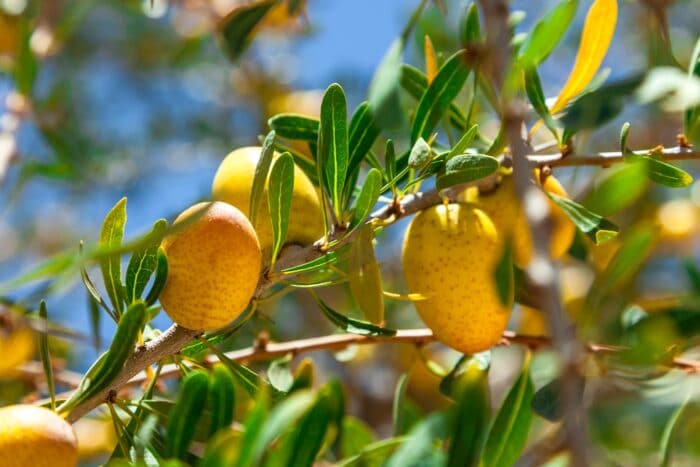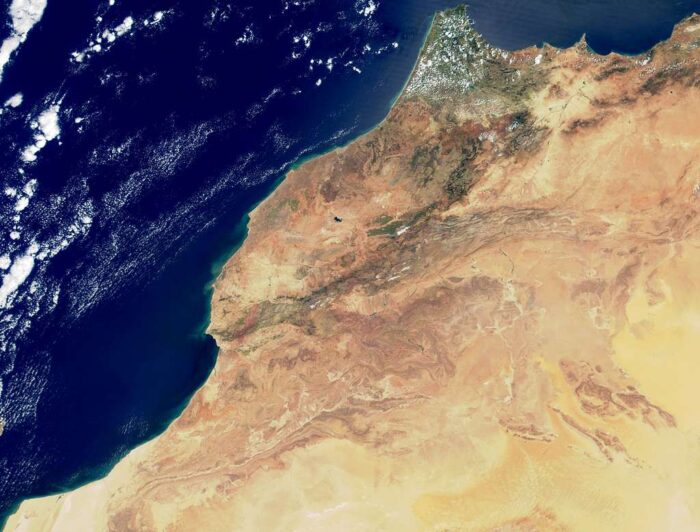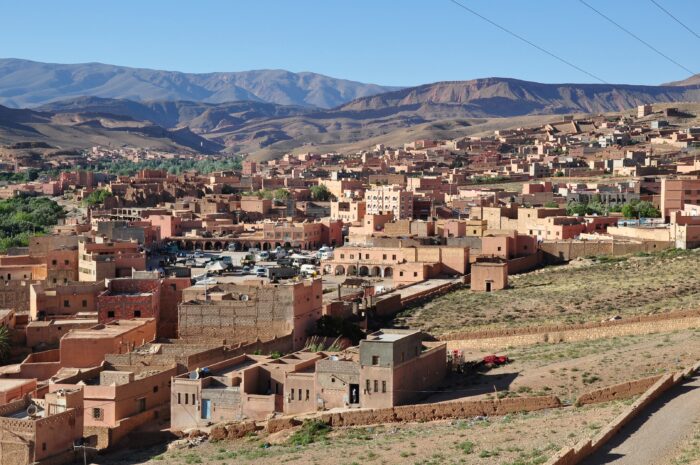March, 2024
Over the last decade, Morocco has endured a series of droughts and heat waves that have severely reduced the productivity of the nation’s agriculture and wildlands.
Now entering its sixth consecutive year of drought, the nation’s largest reservoirs have started to dry up, and winter months that would normally bring much-needed rainfall have instead remained sunny and hot. Temperatures in mid-January soared up to 86°F (30°C), and Moroccan officials have said rainfall is down 70% since September (in comparison to the average year).

Such a profound and prolonged period of drought has reduced some of Morocco’s key reservoirs to just 1% or 2% of their normal capacity. In mid-February of 2024, the collective capacity of all reservoirs in Morocco amounted to just 25% of their potential, down from 32% in February of last year. This stands in stark contrast to pre-2015 seasons when reservoir capacity neared 100% throughout the nation. The period between 2019 and 2023 has been the driest series of years in Morocco since the 1960s – a period that has also been marked by record high temperatures, a record number of heat waves, and record low precipitation levels.
As a result, Moroccan agriculture has consistently shrunk in both size and productivity since early 2019. Due to water shortages, many farmers that live in remote regions are no longer permitted to pump water or irrigate their fields, resulting in the widespread loss of fruit trees, olive trees, and other perennial plants. Those that can still harvest their crops are finding it more and more difficult to source usable material from the region. Data from AGMET Earth Observation Indicators, a tool developed by NASA Harvest and international partners from the GEOGLAM (GEO Global Agricultural Monitoring) initiative, indicated that winter wheat crops in northern Morocco were much less green and healthy than usual. This will likely push farmers in certain regions towards food crop production and away from other botanical products.

The agriculture sector of Morocco’s economy employs more than 31% of the working population and is responsible for around 12% of the nation’s GDP. Mohamed Taher Sraïri, a teacher and researcher at the Agronomic and Veterinary Institute of Rabat has warned “Traditional rain-fed agriculture, which represents at least 80% of cultivated areas, is affected, as is irrigated agriculture, because the pressure increases on the groundwater from which the water is drawn. Some people end up sacrificing their livestock and even uprooting their trees.”
A new plan for the nation, dubbed “Generation Green,” was adopted by officials in 2020 and includes a wide range of sustainability objectives, though the path towards achieving those objectives remains relatively unclear for many local farmers.

Morocco produces a wide range of agricultural products utilized by the essential oils industry including argan, rosemary, chamomile, myrtle, and rose. Many of these materials are wild harvested by local families and communities in the rural, arid and semi-arid regions of the nation – they are botanicals that provide a consistent and reliable income for thousands of people. As a longstanding partner and supporter of these families, Berjé will continue to work with our community in Morocco, providing assistance whenever possible.
Posted In:
Essential Oil Expert - Feature Articles - Market Report - Uncategorized